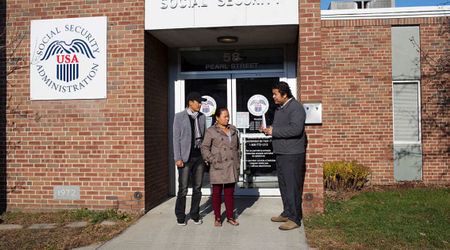From "I Do" to Debt: Newlyweds' $44,000 Wedding Blunder and Financial Fixes

In September 2022, Amy, 28, and Tori, 27, bought their first home before quitting their jobs to pursue better opportunities. They got married in September 2023. However, amid these milestones, they encountered financial challenges. While organizing their dream wedding and planning a honeymoon in Greece, they amassed over $44,000 in credit card debt. Their financial woes deepened with an additional $17,000 in debt and unexpected mortgage expenses, leaving them broke.

Recognizing the need for professional intervention, the couple sought guidance from Ramit Sethi and appeared on his podcast, "I Will Teach You to Be Rich."
Wedding Expenses and Financial Decisions
In the United States, weddings are often perceived as costly affairs; however, this notion is not entirely accurate. Typically, a marriage license costs around $100 or less, depending on the state, with nearly all other wedding elements considered optional. Tori and Amy expedited their wedding plans within four months, driven by Amy's affection for a particular venue, prompting hasty decisions.

Despite having a budget and anticipated family contributions, the tight timeline led them to hastily pay substantial deposits to various vendors. Expenses quickly escalated, surpassing their budget. With insufficient time to save, they turned to credit cards for multiple expenses, likening the experience to drowning due to the necessity of prompt contract commitments.
While desiring a lavish wedding or other significant purchases is a personal choice, Sethi advised prioritizing full awareness of associated costs and budgeting for contingencies. Drawing from his own wedding planning experience, the finance guru recommended leaving a significant margin for error, heeding the advice to "double your wedding budget." Despite slightly exceeding his budget, this approach ensured better preparation.

Money Mindsets and Saving Habits
Upon delving into their mindsets, Sethi uncovered stark differences in Amy and Tori's upbringing. Tori experienced financial insecurity during her upbringing, fostering a cautious approach to money. In contrast, Amy hails from a well-off family, devoid of financial worries, leading to her optimistic outlook.
Tori's past instilled a sense of prudence, while Amy's optimism often resulted in alternating cycles of saving and splurging. Amy's diligent saving habits enabled her to finance college without debt, yet occasional impulses led to significant savings depletion.
Conversely, Tori demonstrated disciplined financial behavior during their home purchase preparation, diligently paying bills, setting realistic goals, and adhering to budgets. However, after buying their home, their spending habits became more relaxed.
Sethi observed Amy's fluctuating saving and spending patterns within their relationship, a common but potentially challenging trait to modify. "The solution isn't simply to try harder. It's about having a clear, compelling vision of why you want to change and later seeking support to make it happen," he said.

Income Boost for Financial Stability
Sethi advised Tori and Amy to use their combined annual income of $125,000 to alleviate their debt and financial obligations. Despite initially leaving their jobs to pursue entrepreneurship post-home purchase, they now recognize the necessity of stable income.
With a $3,000 monthly mortgage and an additional $3,000 in credit card debt, their financial flexibility was limited. While exploring alternatives like selling their home or renting out a room, Sethi emphasized the paramount importance of increasing income to expedite debt repayment.
Fortunately, Amy secured a new job offer which gave a $10,000 yearly salary boost, providing some relief. Both of their businesses showed promising growth prospects, with Tori intending to devote full-time hours and Amy planning to balance it with her 9-to-5 employment.






















